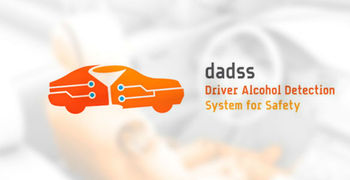 We all know drunk driving is dangerous. Additionally, people charged with driving under the influence (DUI) face significant penalties that can affect their lives and families. Reducing the number of people who drive drunk is beneficial for everyone.
We all know drunk driving is dangerous. Additionally, people charged with driving under the influence (DUI) face significant penalties that can affect their lives and families. Reducing the number of people who drive drunk is beneficial for everyone.
Although DUI-related deaths are down significantly from where they were decades ago, there has been a recent increase in drunk driving fatalities. So how far should we go in our efforts to stop drunk driving?
DADSS may be one solution
Driver Alcohol Detection System for Safety (DADSS) is a plan to eliminate drunk driving entirely. The technology would work similarly to the already well-known and widespread breath test devices, including those installed after a DUI conviction. These devices would either measure the breath of the driver or use infrared technology to measure BAC in the capillaries inside the skin of the driver. If a high BAC is discovered, the car would not start.& ;
Recently, the National Highway Transportation Safety Administration renewed efforts into the Driver Alcohol Detection System for Safety. Along with the state of Virginia, the NHTSA announced in February that it was donating over $5 million to “further develop and deploy DADSS.”
Issues remain, but are not insurmountable
Currently, the NHTSA and the Automotive Coalition for Traffic Safety (a private group representing leading automakers worldwide) are combining efforts to research and develop this technology further. For example, they must determine where in the vehicle to install such a device. In addition, the device must be accurate, precise and measure only the driver’s blood alcohol concentration – not those of passengers.
The next step in DADSS is to conduct field tests in working vehicles.
No immediate release date
While there is strong support for such technology – which could end up saving the lives of thousands of people every year – there is still a great deal of uncertainty. For one thing, it is not clear how soon this technology will be available. Additionally, it is unclear if automakers, consumers, or lawmakers would consent to making DADSS mandatory in all vehicles. Current speculation is that this technology would only apply to new model vehicles; existing cars would not be required to have this installed. Instead, the feature will likely start out as optional.
According to the NHTSA, approximately 28 people died per day in 2016 due to accidents involving drunk driving. DADSS technology could show up in new model vehicles as soon as 2020 as an optional feature.

